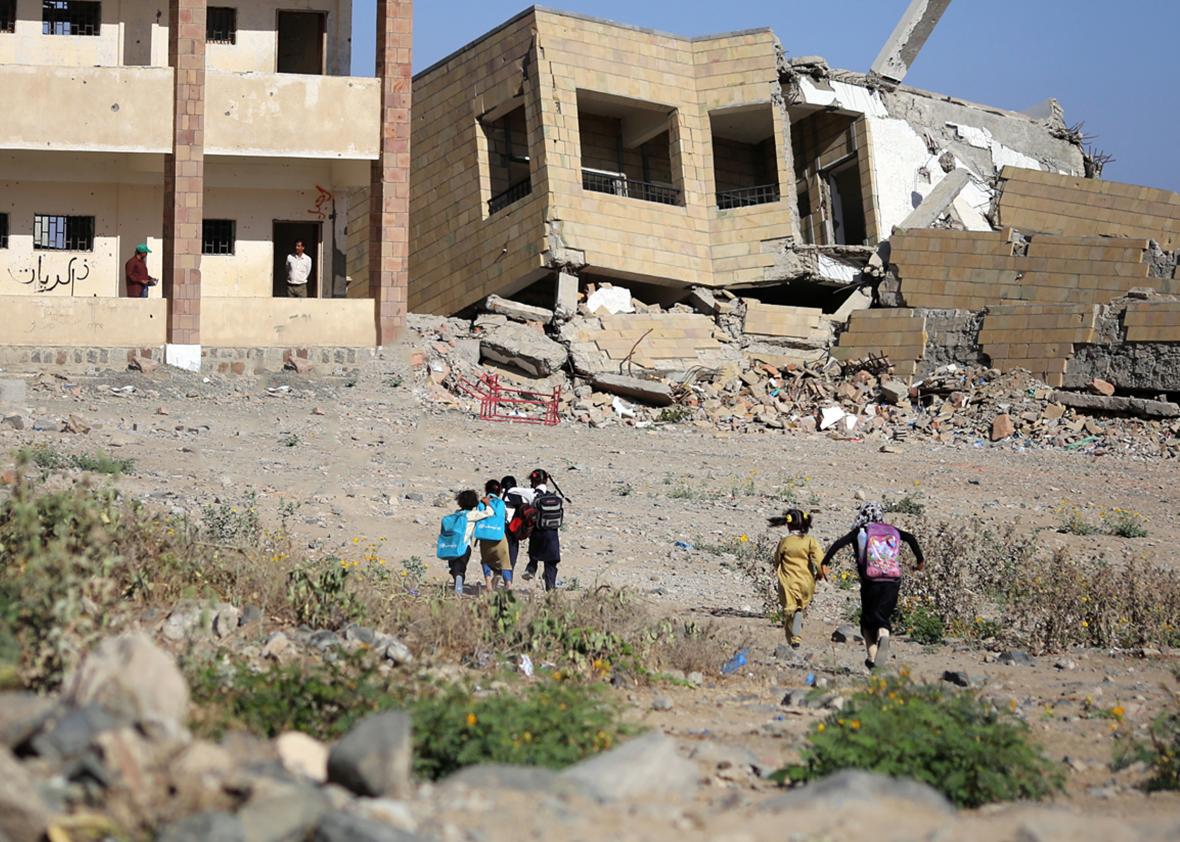Almost exactly two years after the U.S. began supporting the Saudi-led military campaign in Yemen, the Trump administration is planning to increase its support for the operation, which has not only had a devastating humanitarian impact on one of the world’s poorest and most unstable countries, but has mostly failed to accomplish its military goals.
The war in Yemen is actually two wars—at the very least. One, conducted by the U.S. and its allies, primarily via airstrikes, against al-Qaida in the Arabian Peninsula, an affiliate blamed for numerous terrorist plots against the U.S. And the other primarily carried out by Saudi Arabia and other Gulf states on behalf of Yemen’s deposed government, against the Houthi rebels, widely viewed in the region as a proxy for Saudi Arabia’s archrival Iran.
For the latter operation, the Obama administration had provided Saudi Arabia with some logistical support and weapons. But in December, Obama finally backed away from the war due to concerns over civilian casualties, blocking a planned sale of guided munitions kits to the Saudis.
The Trump administration is now planning to resume that sale, reports the Wall Street Journal, and has significantly increased “intelligence and logistical support for the militaries of Saudi Arabia and the United Arab Emirates.” Secretary of Defense James Mattis is behind the push to amp up support for the operation, according to the Washington Post. And Saudi Arabia has also been making overtures to the Trump administration, with Prince Mohammad bin Salman dubiously referring to the president as a “true friend of Muslims” after a White House meeting earlier this month. (The kingdom had grown frustrated with the Obama administration over the Iran deal, its support for the Egyptian revolution, and a number of other factors.)
The main U.S. interest in Yemen is still fighting AQAP, but Mattis and the administration also seem to buy the Saudi case that Yemen is necessary to push back against Iranian encroachment.
The thing is, the war hasn’t been very good at accomplishing either goal. Micah Zenko of the Council on Foreign Relations notes in Foreign Policy that amid the chaos of civil war, AQAP has grown from “approximately 1,000 members in 2014 to 4,000 in 2016, according to the State Department.” Former Defense Secretary Ashton Carter conceded that the war was helping al-Qaida gain ground in 2015.
As for the Houthis, their capabilities only appear to be growing, as shown by ballistic missiles they launched toward Mecca last fall and at a Saudi ship in January. Evidence of direct Iranian support for the Houthis was difficult to discern early in the conflict, making many experts suspicious of the case that they were just Iranian puppets. But in the past few months there has been evidence of Iran supplying the Houthis directly with weapons, namely those ballistic missiles. If this wasn’t really a proxy war with Iran before, it’s rapidly becoming one.
Meanwhile, Saudi airstrikes as well as fighting on the ground have killed an estimated 10,000 civilians. Many of the strikes appear to be indiscriminate, hitting hospitals, schools, and in one incident earlier this month a boat carrying Somali refugees, killing dozens. Thanks in part to the fighting and trade blockades, Yemen is also on the verge of famine. There was once a (not all that convincing) case to be made that U.S. coordination with the Saudi-led strikes could help limit the collateral damage. That’s tougher to argue now, given the Trump administration’s seeming indifference to civilian casualties.
So what are we doing there?
